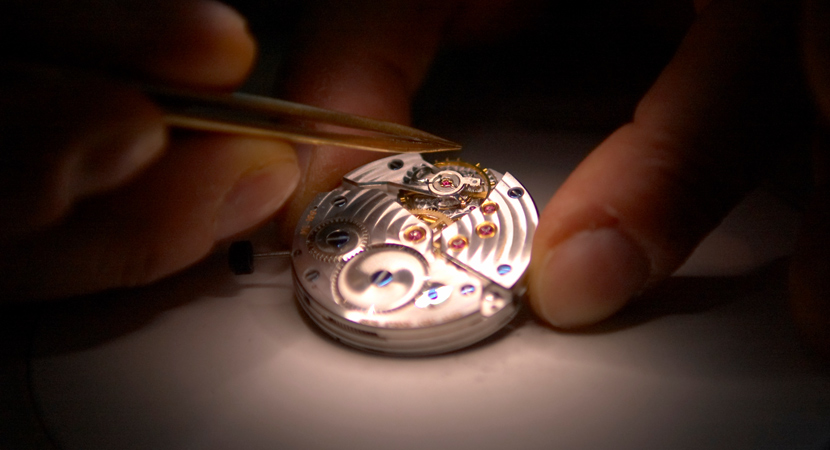Episode 08
An end mill story of giving life to mechanical watches.
Mechanical watches, reevaluated in an age of being rushed for time.
When the clock hands point to 3 PM, it’s time for “oyatsu” (a snack). But why does 3 PM mean snack time? The roots of this go back to the Edo Period time system known as the “seasonal time system.” This system designated 30 minutes before dawn as the “6th hour of the morning” and 30 minutes after sunset as the “6th hour of the evening,” dividing every 2 hours between them into 6 parts. “Oyatsu” gets its name from the fact that eating 2 meals a day was the custom back then, and this snack was eaten during “hiruyatsu” (from around 2 to 4 PM). Also, during the Edo Period, though there were hour-long (“hantoki”) and half hour-long (“shihantoki”) divisions of time, it’s said that smaller divisions were not shown. To our present day sensibilities, it seems that Edo Period people enjoyed lives wherein time was quite unhurried. In this age, Japanese is said to be strict about time even in comparison with the rest of the world.
As people squeeze every minute and second out of the day, the value of mechanical watches is receiving a fresh look. Without using batteries, in this formative art, delicate spring-powered parts and gears interlock, tick-tocking as they mark time. If it’s accuracy you desire, such watches cannot compete with quartz- and wireless-type models powered by batteries. Moreover, the owner must deal with non-trivial things such as the regular maintenance necessary to maintain their watch’s condition. However, having respect for the technology and traditions packed within its just centimeters-wide case, and feeling a sense of romanticism in wearing the watch as an artwork rather than a common item, people choose mechanical watches in this age of convenience.

Taking Swiss mechanical watch traditions into the future.
NS TOOL plays a role in the manufacturing of such mechanical watches as well. Because hundreds of delicate parts interlock at incredibly exact distances inside the watches, extreme precision is essential for each part. Brands representing Switzerland, home of watchmaking, searched for ideal tools for movement manufacturing, and chose our end mills from among those all over the world.
As technology advances such as wireless watches and smart watches occur, watches become more accurate and more convenient. Naturally, supporting realization of technology that has not yet taken form yet is a critical job for NS TOOL. However, we believe there are also other tasks for our end mills, such as continuing to support Swiss mechanical watch traditions dating back to the 16th century, and giving objects to the world that can be passed from parent to child—and from child to grandchild—passing through generations.
We’ve introduced a total of 8 “NS TOOL Innovation Stories” on our official website.
These are not the limits of our efforts; we support the realization of dreams regardless of sector.
The society might be changed by someone’s idea, or the world will be amazed by some inspirations. NS TOOL will continue to pursue the creation of end mills beyond the cutting edge, and open up the limitless possibilities for Japanese “monozukuri.”



